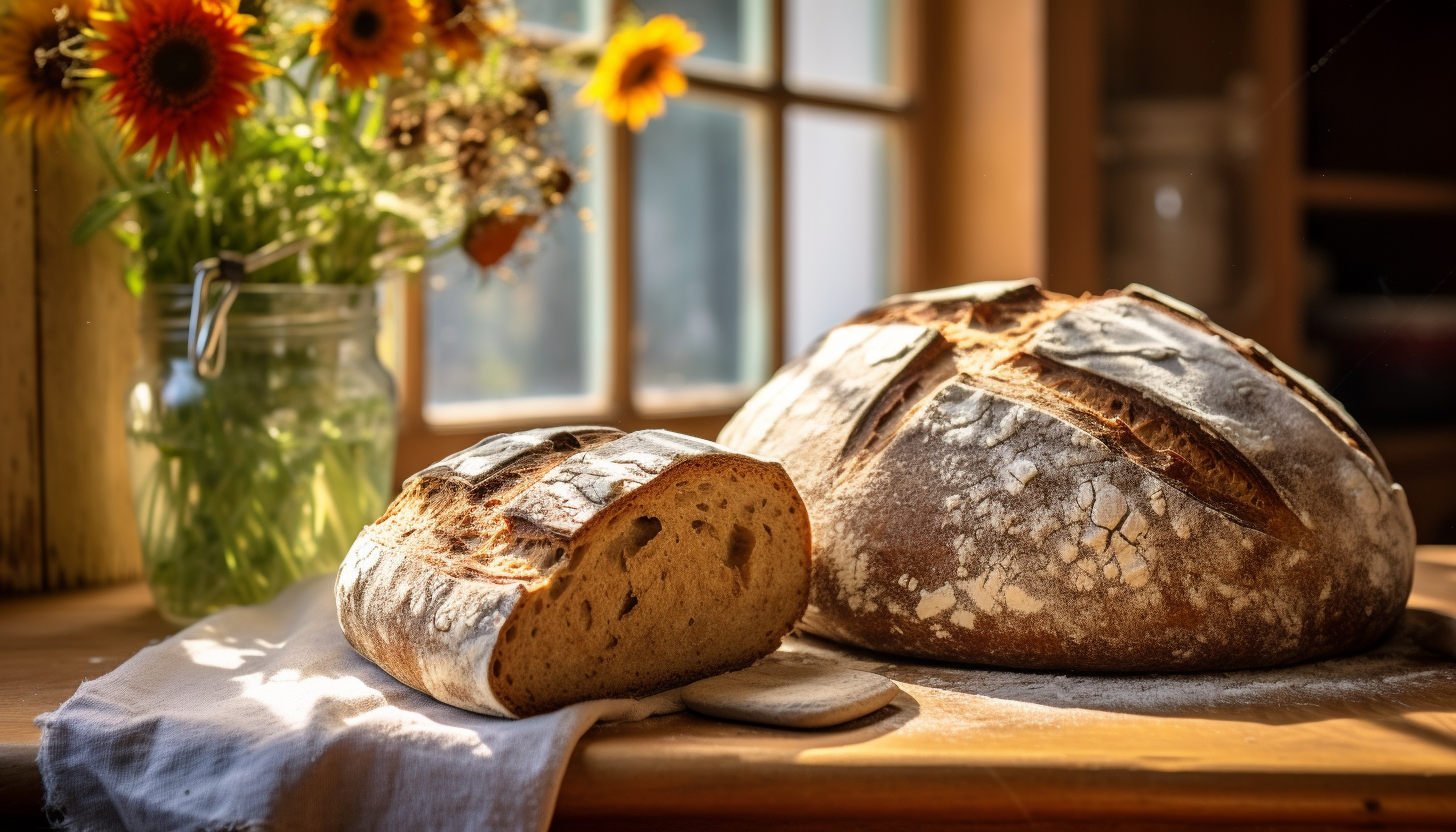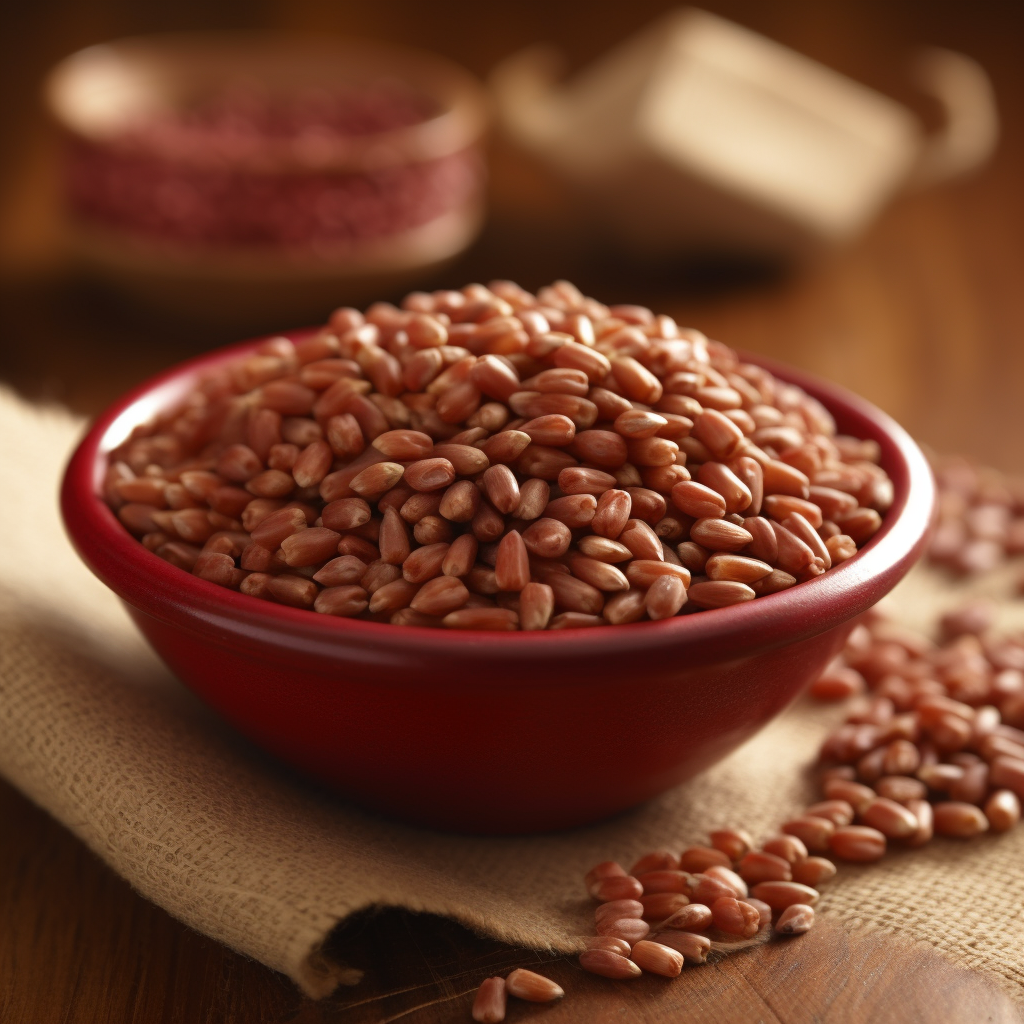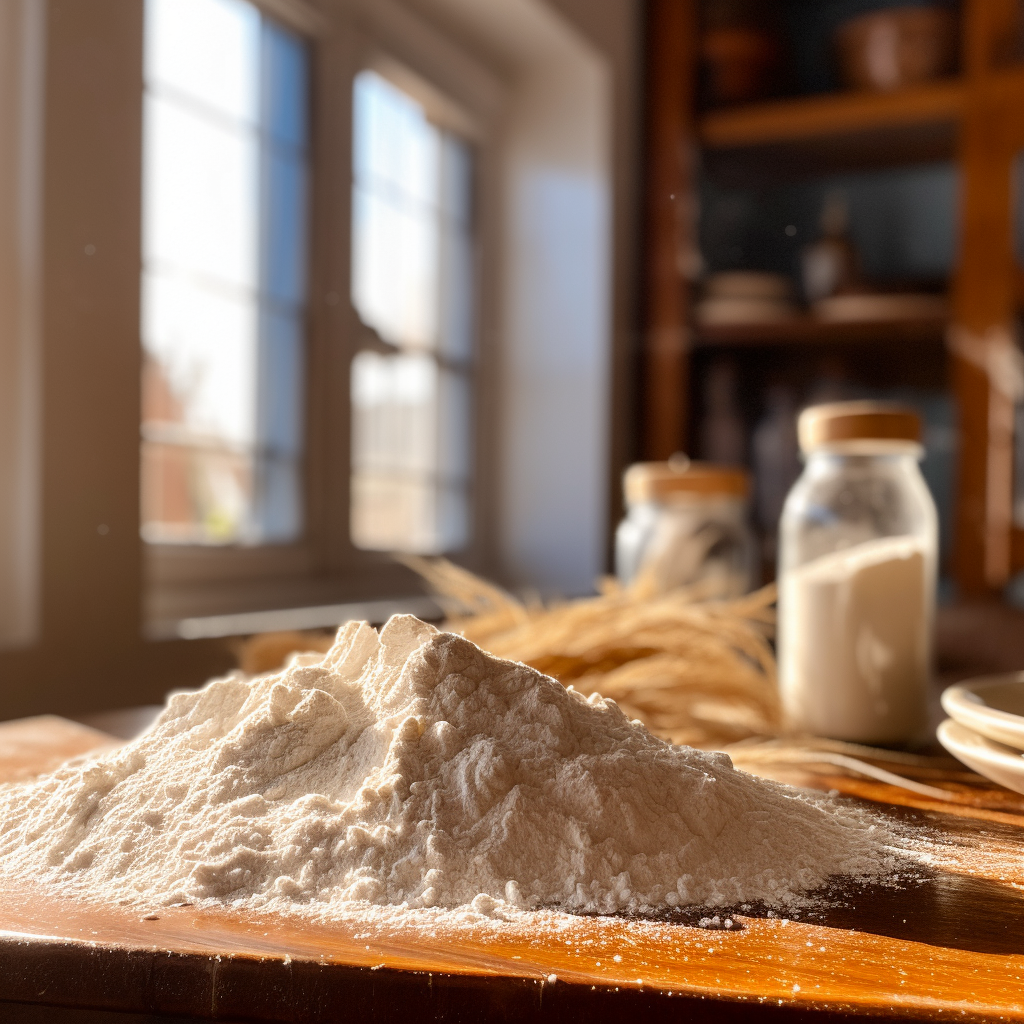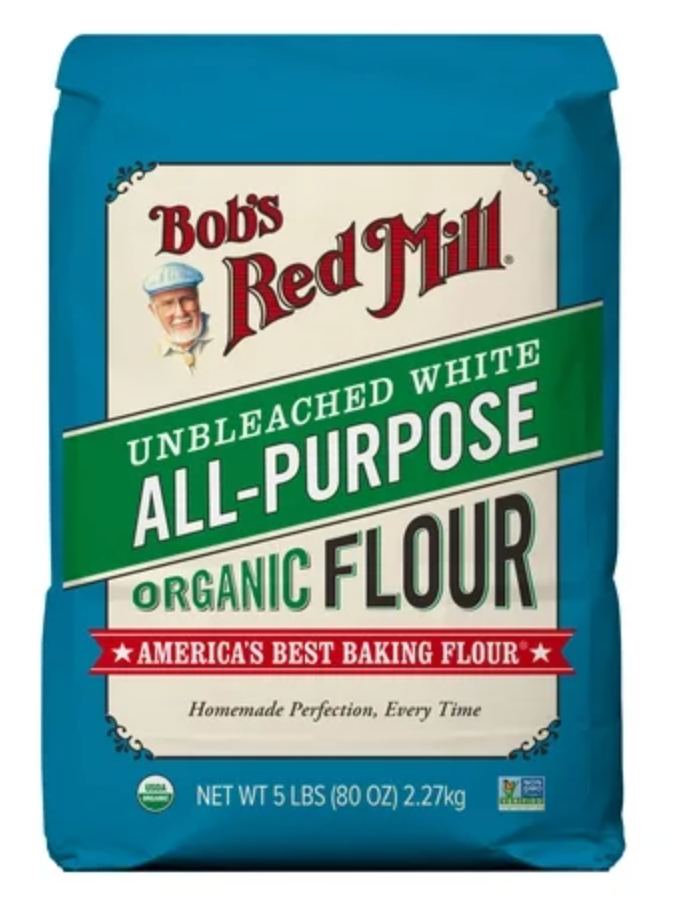If you’re like me, you love baked goods, you love saving money, and you also care deeply about eating as healthily as possible. To all three ends, I discovered a game changer: home-milled flour.
I am so eager to share this with you. Most store-bought flours and baked goods can be detrimental to health (even organic!). But we can enjoy healthy baked goods that are easy, even more affordable, and even more delicious! I know it sounds too good to be true, but it is true!

Article contents
- What is home-milled flour? How does it compare to store-bought flour?
- Benefits of Baking with Home-Milled Flour
- Getting started
- What it’s like to mill grains at home
- Conclusion
What is home-milled flour? How does it compare to store-bought flour?
All flour is essentially some raw material (grain, nut, etc.) that has been milled into tiny pieces like sand. For example, wheat flour is wheat berries that were milled down; almond flour is almonds that were milled down.


A mill is just a device that grinds things down into a fine powder. It can be motorized or manual. It can be large for commercial operations or small and cute and sit on your kitchen counter.
Flour you would buy in the store (like, all-purpose flour or bread flour) started as hard wheat berries that are milled. To make it shelf-stable, the bran & germ are sifted out. This process removes a lot of the “good stuff” and leaves the starchy glutenous part. Shelf-stable flour can harm the gut when consumed in excess.
However, when you mill the same wheat berries at home and retain all the “good stuff” – the flour is beautifully balanced with fiber, protein, vitamins, and minerals. It is truly 100% whole wheat in this case. Many folks who are gluten-sensitive, find that they can tolerate freshly-milled 100% whole wheat flour.
Benefits of Baking with Home-Milled Flour
Home-milled flour is highly nutritious!
The difference in nutrition is astounding. Whole wheat berries are superior in protein, vitamins, minerals, and fiber.
You can see a more detailed comparison here.
You’ll notice the all-purpose flour does win slightly in a few vitamin categories (thiamin, riboflavin, niacin, iron). This is because it has been enriched with those vitamins. The process of creating shelf-stable flour requires stripping it of the bran and germ, which removes significant wellness benefits. Unfortunately when white flour grew in popularity by the early 1900s they realized it was causing beriberi, pellagra, and anemia1. So they “enriched” the flour back with a handful of nutrients, but not all of them. You can see plainly here it’s only a subset of the goodness that comes when you eat the whole berry (for example: fiber, vitamin E, antioxidants, phytochemicals, folic acid, and more!).
Because it’s so nutritious and better for your gut microbiome, whole, freshly-milled flour is also better for digestion. The fiber in whole grains is considered one of the top prebiotic foods (which is important to feed the probiotics in your gut)2.
Home-milled flour is delicious!
It really does taste better. One of those things you have no idea until you try. Now whenever I’m offered grocery store bakery goods I really can’t do it. It grosses me out. Yes I’m totally spoiled now!
Not only that but having a mill opens up a wide variety of flavors through diversity of grains.
Home-milled flour is cost effective!
I’ll just give one example here. But so far every comparison I’ve checked the whole grains win in both price and nutrition.
| Bob’s organic white flour | Azure’s organic hard red wheat berries |
$20.49 for 5lbs  (source, accessed 4/7/2024) | $7.03 for 5lbs  (source, accessed 4/7/2024) |
Whole grains are a prepper’s dream
If you’re someone who cares about preparedness in the case of an emergency, I encourage you to consider storing whole wheat berries and other whole grains.
Whole wheat berries can last nearly indefinitely, without refrigeration, as long as you keep rodents, bugs, and moisture out. Keep them in a food-grade bucket. If you get a variety of grains (for example Ezekiel grains) you can ensure that you’re feeding your family complete proteins even in times of emergencies.
If you have an emergency without power you have a few options to consume them. First is to soak them overnight, this will create a highly nutritious cereal. Second is to get a manual hand grain mill and then you have flour. You would need a gas oven or other way to bake with the flour.
Getting started
To get started, you really just need a grain mill and some grains. All of the other baking equipment and supplies you already had will continue to be useful.
Choosing a grain mill
So, honestly, I am a working mom and I didn’t take the time to shop mills. I just wanted to get going for a reasonable price and quickly reap the health benefits. I saw that Sue Becker recommended the WonderMill3 and she’s a domain expert who I found through Beyond Labels 4(a book I highly recommend). Also the price, although not trivial, seemed reasonable for the total benefits. Sue said she’s seen the WonderMill last decades so that was good enough for me.
Of course, now that I’m researching a bit more I have seen some love on the internet for the Mockmills, they certainly look aesthetically pleasing but more expensive. I’m sure there are other nice mills available as well. I can’t yet say how any perform better/worse over time. Perhaps a topic for a future post. 🙂
Buying grains
After I made the decision to buy the mill I wanted the grains to arrive as soon as possible! Unfortunately I wasn’t able to find grains on Amazon that meet my criteria:
- organic
- priced reasonably
So, for my first grains purchase I went with Azure Standard. I bought:
- 5lb hard red wheat
- 5lb hard white wheat
- 5lb soft white wheat
The hard grains are for breads and pancakes; soft grain I use for brownies, biscuits, biscottis, etc. I figured 5lbs was a good size to start and try a lot of projects. My next order I may increase to 25lb or more.
Resources to get you started
- The Essential Home-Ground Flour Book: Learn Complete Milling and Baking Techniques, Includes 100 Delicious Recipes [Spiral-bound], Sue Becker5
- This book has a lot of great recipes to get started. I’ve made a few already. And there are a lot of wisdom nuggets in there (for example expect 2 cups of whole grains to yield about 3 cups of flour!), including research behind why home-milled flour is so beneficial.
- I will say I found it a bit annoying to have a table of contents for each section of recipes. But my husband had the brilliant idea of adding tabs so that they are easy to find.
- Also she gives measurements in volume (cups or mL) instead of weights (grams). So I’ve been taking my own notes – for example I ground up the soft white wheat and then measured 1/2 cup which turned out to weigh about 60 grams. So now going forward I know how to measure soft white wheat by weight for recipes using cups.
- Nourishing Traditions: The Cookbook that Challenges Politically Correct Nutrition and the Diet Dictocrats, Sally Fallon6
- This book has a lot of wisdom and using whole grains is only one chapter. And that one chapter has been helpful so far! Just this morning we tried the pancake recipe that called for soaking the fresh-milled flour overnight in kefir. It was fantastic and I know the health impact was off the charts positive.
- Also, I’m also planning to try the sourdough recipe next. Will let you know.
What it’s like to mill grains at home
Milling your own flour
Although you might expect this to be the meat of this post, it’s actually tremendously simple.
- Get out your grain mill
- Plug it in, turn it on
- Put in the grains
- After it’s milled all the grains, wait a few moments, turn it off, unplug
- Bake! Now you have beautiful home-milled flour!
Of course, if you have a manual mill you can skip steps 2 and 4 😉
Tips:
- The WonderMill3 offers 3 settings (coarse, bread, pastry), so you’ll want to pick that first. Other mills may have more or fewer.
- Never put in any oily or wet grains. Check the manual for what grains you can process without damaging the mill.
- I like to mill exactly what I need. The flour will go rancid after a few days and will lose nutritional value over time, starting immediately after milling. This is why measurement by weight is better for baking.
- Sometimes some flour can get lost in the process so you could add a few grams to your hopper to account for this. Or just weigh it afterwards.
- Although it’s easy and convenient, if I’m getting the mill out, I figure it saves time to mill at least 2 projects – one that’s a quick turn-around and one that’s a longer wait time. A couple examples:
- Last night I milled ~2 cups hard red for pancakes (and let the flour soak overnight in kefir) and also ~1 cup soft white for biscottis that I baked that night.
- A previous day I milled ~3 cups hard wheat for sourdough and ~2 cups soft white for biscuits that I immediately baked.
- Read your manual. The WonderMill manual very specifically gives instructions on letting the mill start and end without grains in there. This will help with longevity. It also says to clean it with just a simple brush.
Baking with freshly milled flour
For the most part, it’s the same baking experience as using store-bought flour. Except that you have a glow about you, knowing that your end product will be far superior 😉
In seriousness, if you are trying to use a recipe that expects store-bought all purpose flour, there will likely be some adjustment needed to use home milled whole grain instead.
- You can assume 1:1 when measuring by weight (e.g. grams).
- However, if you are using volume measurements (e.g. cups or mL) you may need to adjust as follows8:
- Low-moisture grains (e.g. hard wheat, kamut, barley): 1:1 or slightly less (e.g. 1 cup all purpose can be substituted for shy of 1 cup freshly milled hard wheat)
- High-moisture grains (e.g. soft wheat, spelt, rye): 1:1.25 (e.g. 1 cup all purpose can be substituted for 1 1/4 cup freshly milled soft wheat)
You can bake anything with home-milled grains. There are no recipes off limits to you. If anything I feel I have more recipes available to me now, and I’m excited about the possibilities. I’m going to try pasta-making again!
Take the nutrition further
More detail coming soon!
- soak or ferment (sourdough)
- sprouted wheat
Conclusion
Baking with home-milled flour has been a game changer for me and my family. The reasons are overwhelming, but for me it’s primarily about nutrition. That the end product is even more delicious is a supreme bonus. I can’t imagine ever going back to store bought, shelf-stable flour.
If you haven’t yet, I strongly encourage you to try it. And please share in the comments any questions, thoughts, or ideas. I’m eager to know how it is going for you.
Thank you for taking the time!
Footnotes
- Source: Sue Becker’s book page 30. Please note: I am sharing this as an Amazon affiliate link so that I can get a small commission at no cost to you. ↩︎
- Source: Sue Becker’s book page 33. ↩︎
- WonderMill – this is the grain mill we bought. It has been great so far! Please note: I am sharing this as an Amazon affiliate link so that I can get a small commission at no cost to you. ↩︎
- Beyond Labels book – This book has been life changing for us. Highly recommend it. It’s actually what first planted the seed in my brain that I could mill my own flour. Please note: I am sharing this as an Amazon affiliate link so that I can get a small commission at no cost to you. ↩︎
- Sue Becker’s book – All of the recipes I’ve tried so far have been great. This is helpful because I have tried one recipe that assumed not-home-milled flour and it didn’t come out as expected (I think the hydration was off – the true whole wheat was a bit thirstier, maybe). So, it’s nice to have some tried & true recipes to keep me excited and feeling accomplished while I’m still learning. The book also contains a lot of the “why” and a lot of helpful information. Please note: I am sharing this as an Amazon affiliate link so that I can get a small commission at no cost to you. ↩︎
- Sally Fallon’s book – This book has a ton of wisdom, including how to use home-milled grains. Please note: I am sharing this as an Amazon affiliate link so that I can get a small commission at no cost to you. ↩︎
- WonderMill – this is the grain mill we bought. It has been great so far! Please note: I am sharing this as an Amazon affiliate link so that I can get a small commission at no cost to you. ↩︎
- Source: Sue Becker’s book page 111 ↩︎

Leave a Reply